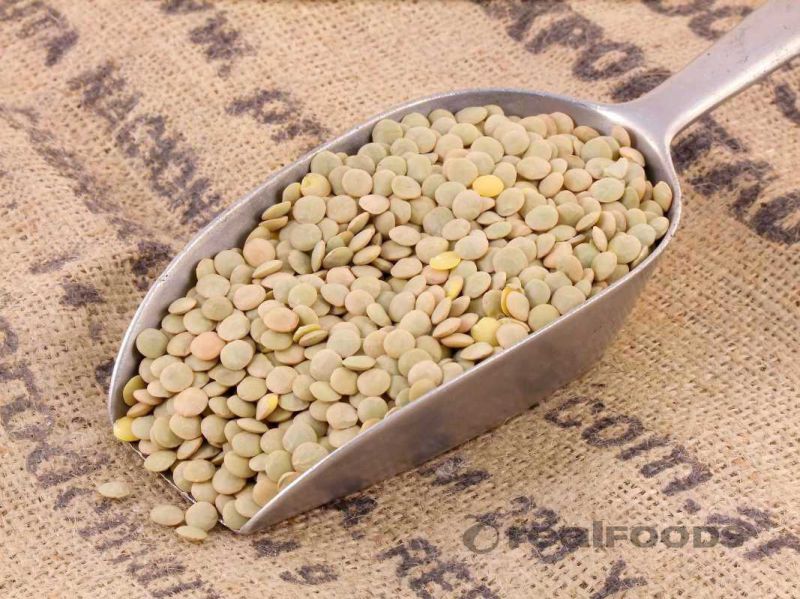
Looking for something new to eat and asking ‘How do I cook that?’ Here at Real Foods we have a wealth of information available to help you make some small changes to your weekly menus so that you are eating healthier foods.
Take a look at the details of the free information we have on how to cook and prepare some of our products that you may not be completely familiar with. Click on the titles to read the full article.
How Do I Cook Amaranth

Amaranth is an ancient plant, around 8,000 years old, and was once a staple of the Aztec and Inca diet. Amaranth seeds, used as a grain, are gluten-free and a good source of protein, fibre, calcium, iron, magnesium and vitamin C. They have a mild, nutty flavour.
How Do I Cook Kamut

Kamut the registered trademark under which khorasan wheat is sold.
All grain grown under the Kamut trademark is certified organic, containing between 12-18% protein and high in the mineral selenium, which plays a role in the functioning of the thyroid gland.
Kamut contains gluten so is not suitable for coeliacs, however some with allergies to common wheat may find they can tolerate it. It has a rich, buttery flavour.
How Do I Cook Bulgur

Bulgur, a whole wheat grain, usually durum wheat, that has been parboiled, dried, cracked and sorted by size. It was eaten by the Romans and Egyptians, and today is most often associated with Middle Eastern and Mediterranean cuisine. It is high in fibre, B vitamins and minerals.
How Do I Cook Millet

Millet is one of the oldest foods known to humans and possibly the first cereal grain to be used for domestic purposes. It was grown as early as 2700 BC in China where it was the prevalent grain before rice became the dominant staple. Today it sustains 1/3 of the world’s population and is a significant part of the diet in northern China, Japan, Manchuria and various areas of the former Soviet Union, Africa, India, and Egypt.
How Do I Cook Pearl Barley

Pearl barley, as opposed to pot or Scotch barley, is the variety most commonly used. The outer bran is removed and the grain polished to a shiny ‘pearl’, making it more tender to the bite and easier to cook.
How Do I Cook Quinoa

Quinoa (pronounced keen-wah) is the wonder grain: high in protein, gluten-free, easy to digest, and quick to cook. It makes a delicious breakfast (with sweet or savoury additions), pilaf, and salad. Add it to baked goods for additional flavour.
How Do I Cook Spelt

Spelt, also known as dinkel or hulled wheat, was a staple food in Europe until medieval times. It has been revived through growth in organic farming as spelt requires fewer fertilisers than other wheat grains.
It has a sweet, nutty flavour and contains a range of vitamins and minerals including vitamin E, calcium, zinc and iron. Spelt contains gluten so is not suitable for coeliacs, however some with allergies to common wheat may find they can tolerate it.
How Do I Cook Rye Grain

Rye Grains have been cultivated for under 2000 years, that’s actually quite a short time comparatively, it’s one of the more lately domesticated crops. It’s popular in Scandinavian and Eastern European countries and is the key ingredient in rye and pumpernickel breads.
How Do I Cook Wheat Grain

Wheat Grain (also known as wheat berries) are whole, unprocessed wheat kernels that contain all three parts of the grain, including the germ, bran and starchy endosperm. Only the hull, the inedible outer layer of the grain, has been removed. This means that wheat berries retain all of the grain’s vitamins, minerals and phytochemicals.
How Do I Cook Rice

How to cook rice, the different types of rice and some recipe ideas..
How Do I Cook Popcorn

Popcorn is a type of Maize, that puffs upon cooking, making the distinctive popping sound that gave the corn its name. Because it is a whole grain, it has all three parts of the grain: the germ, the bran, and the endosperm.
How Do I Cook Buckwheat Roasted Kasha

Buckwheat Roasted Kasha is made from hulled buckwheat. Also known as Buckwheat Groats, Kasha is an Easter European/ Russian version of porridge. Ideal for a long-lasting breakfast with a slow release of energy.
How Do I Cook Pinto Beans

Pinto in Spanish means ‘painted’ and it’s easy to see how these beans got their name. The pale pink-beige pinto beans are speckled with red-brown ‘paint splatters’, Jackson Pollack-style. The speckles disappear when the beans are cooked and they turn a creamy pink colour all over.
How Do I Cook Chickpeas

Chickpeas are available pre-cooked in cans or dried; they must be soaked before cooking. Chickpea or Gram Flour (made from dried ground chickpeas) is widely used in Indian and Bangladeshi dishes.
How Do I Cook Green Lentils

Lentils come in lots of different varieties including yellow, red, brown, black and green. Green lentils have an earthy, nutty flavour and firm, ‘meaty’ texture, which makes them an ideal substitute in meat-free cooking.







